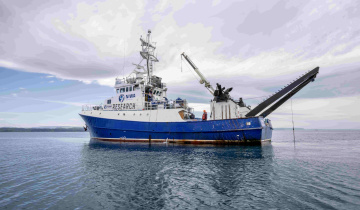If you hook yourself a tagged blue cod, NIWA would like to hear from you.
30 April 2002
The National Institute of Water and Atmospheric Research has tagged over 4000 blue cod as part of a study commissioned by the Ministry of Fisheries to monitor blue cod in Dusky Sound, Fiordland. NIWA is encouraging fishers to return the tags by offering them a t-shirt for their first returned tag and entry into a draw for another prize for each subsequent tag.
Scientists hope the tagging programme will help them discover the relationship between blue cod stocks in the different fiords and outer coastal areas of Fiordland. Recent tagging studies in Foveaux Strait show little interaction between sub-stocks of blue cod, which suggests they are susceptible to localised depletion.
If you catch a tagged blue cod NIWA suggests recording the location as accurately as possible, preferably using a global positioning system (GPS); recording the length of each fish, the tag number, and the release location (if a live fish is returned to the sea); and sending the tag (or tag number), locations(s), and date of capture to NIWA, PO Box 6414 Dunedin (the address is on the tags).
Returned tagged fish will be collected until the end of summer 2002–03. The information collected will contribute towards the development of a better management strategy for Fiordland’s fisheries.
Blue cod are bottom-dwelling fish and are endemic to New Zealand. They are found all around New Zealand’s coastline, but are mostly found on reef edges, gravel, or sand close to rocky outcrops around inshore Southland and the Chatham Islands. In the Marlborough Sounds blue cod tend to stay in relatively small areas, but in Southland they may spread over considerably larger areas, and in Otago they may migrate offshore to spawn.
Previous attempts to tag and describe the movements of blue cod used external tags inserted into the dorsal muscle tissue of the fish, but the number of tags lost was as high as 43%, and divers observed that other blue cod frequently “bit them off”. The external t-tags shown here are inserted through the base of the pelvic fin and overcome many of these problems.







